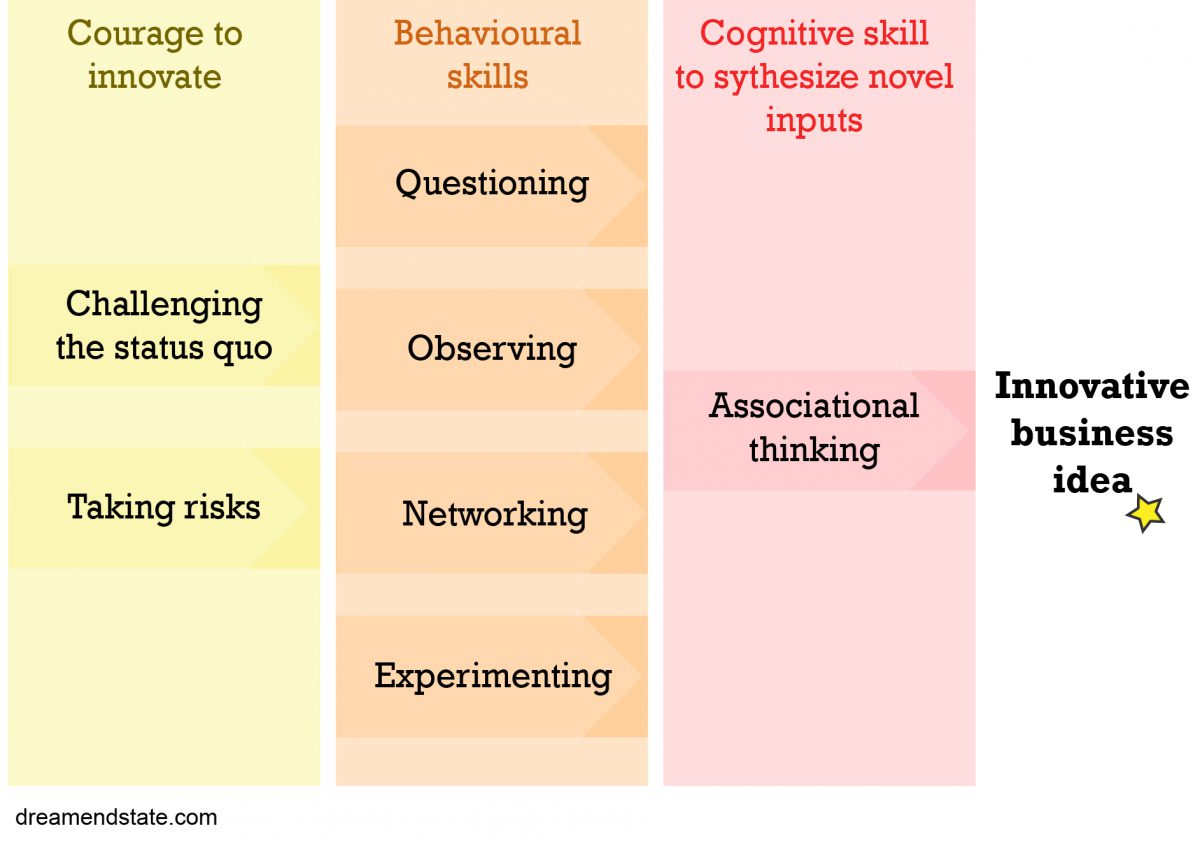This model explains what it takes to be a successful innovator.
We’re talking DNA. Not the long chains of nucleotides that are the blueprint of organisms, but what Jeff Dyer, Hal Gregersen and Clayton Christensen consider the foundational building blocks of great innovators.
After an eight-year study, meticulously collecting data from 500 innovators and 5,000 executives, the authors came up with a list of five behaviours that make up the “Innovator’s DNA.”
The 5 behaviours of great innovators
- Associating: making connections between ideas and concepts from unrelated fields
- Questioning: posing queries that challenge common wisdom
- Observing: (in highfalutin circles, also called ethnography) examining the behaviour of customers, suppliers, and competitors to identify new ways of doing things
- Networking: meeting people with different ideas and perspectives
- Experimenting: constructing interactive experiences and provoking unorthodox responses to see what insights emerge
The authors also find that the world’s most innovative companies are populated, perhaps unsurprisingly, with innovative people, processes and a culture that gives employees courage to try out new ideas and take smart risks.
If the people running Amazon don’t make some significant mistakes, then we won’t be doing a good job for our shareholders because we won’t be swinging for the fences.
Jeff Bezos, The Innovator’s DNA, p.27
Watch out for
The authors find that innovators asked more questions than answers in a normal conversation.
Innovators tend to spend a lot of time testing ideas using different networks of people with different backgrounds.
Leaders at the most innovative companies, lead from the front and spend 50% of their time trying to come up with new ideas.
The authors rather humbly assert that they’ve “cracked the code for generating business ideas, and it’s one that anyone can follow. Creativity is not just a genetic predisposition – it’s an active endeavor.”
So, you have no excuses. Go innovate!
Innovator’s DNA is the third in the trilogy of Clayton Christensen’s books on innovation. Here’s more on his concept of how large companies often leave themselves open to disruptive innovation from the low end of the market.
Resources
Dyer, J. H., Gregersen, H. B., & Christensen, C. M. (2019). The Innovator’s DNA: Mastering the Five Skills of Disruptive Innovators (Updated). Cambridge, MA: Harvard Business Review Press

